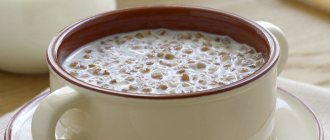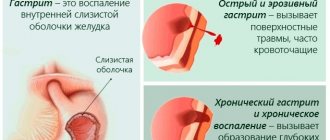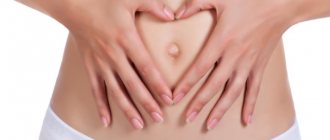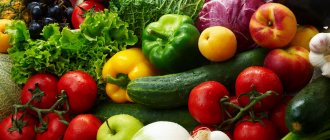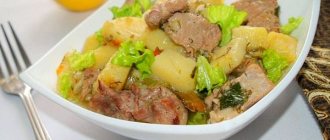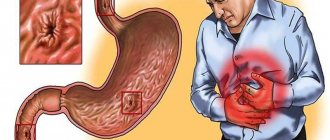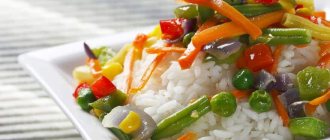The main characteristics of nutrition for pancreatitis:
- Ensuring maximum functional rest of the pancreas during acute manifestations of the disease. This is achieved by observing the principles of mechanical (grinding food), thermal (eating warm food) and chemical (excluding irritants) sparing.
- For a child, it is extremely important to maintain the nutritional and energy value of the diet: in no case should you limit the daily caloric intake, the content of proteins, carbohydrates, fats, vitamins, micro- and macroelements! You just need to use suitable products as sources of these nutritional components.
- Even during persistent remission, prohibited products continue to remain prohibited. Any experiments can end very badly - a new severe exacerbation, hospitalization, parenteral nutrition and a return to the strictest diet. Dear parents, remember that your pity for your child, when you are unable to refuse his requests for a piece of delicious cake, ice cream, a sip of lemonade, etc., will always turn against your child!
What traditional medicine advises
Along with traditional treatment of inflammation of the pancreas, you can also use the advice of traditional medicine, which recommends:
- Give your child non-carbonated mineral water between meals;
- prepare a decoction of licorice, tricolor violet and flax for the sick person;
- tincture of birch leaves and calendula flowers;
- juice from carrots or cabbage.
Attention! It is advisable to drink infusions and juices half an hour before meals! Before using folk remedies, be sure to consult with your child’s doctor.
Pancreatitis is a serious disease and its treatment should be carried out under strict medical supervision. The task of parents is mandatory compliance with medical instructions for the speedy recovery of the child. The main thing is no initiative, be consistent and persistent.
Features of diet for different types of pancreatitis in children
Fast food is prohibited for consumption by children suffering from any form of pancreatitis.
The diagnosis of acute and chronic pancreatitis in children is quite rare. But many parents are familiar with the diagnoses of “reactive pancreatitis”, “dyspancreatism” and “reactive changes in the pancreas”. These terms denote temporary dysfunction of the pancreas in response to an error in the child’s nutrition, an infectious or somatic disease. Dietary recommendations, or rather, restrictions on the duration of adherence and strictness of the diet, vary significantly depending on the type of pancreatitis:
- Chronic pancreatitis involves a strict diet during an exacerbation with a gradual transition to less gentle nutrition options (mechanical sparing is excluded), but the diet continues to be very selective and must be followed for life.
- In acute pancreatitis, a strict diet is prescribed for 1 month; as the child’s condition improves, the child’s diet is gradually expanded. However, the basic dietary principles of table No. 5, even in the absence of any symptoms, will have to be followed for at least 5 years - until the diagnosis is removed. And then gross dietary errors are extremely undesirable.
- In case of reactive pancreatitis, the diet recommended by the doctor is followed for 1–2 weeks after the illness. Then there is no need to adhere to strict restrictions; you just need to provide the child with normal, age-appropriate nutrition.
Causes of the disease
The most important causes of an enlarged pancreas in children are:
- eating large amounts of fatty, smoked, sweet foods (especially the sweets that loving parents spoil their babies with);
- taking a large number of medications, especially antibiotics (after treatment with certain types of drugs, ultrasound may show an enlarged pancreas);
- food poisoning;
- back and spine injuries.
If an enlarged pancreas is detected in a child, the doctor, in addition to the prescribed treatment, prescribes a special diet that will help to quickly cope with the disease.
Products prohibited for acute and chronic pancreatitis, but acceptable for reactive pancreatitis:
- Ice cream.
- Condensed milk.
- Carbonated drinks.
- Pickled and salted foods.
- Sausages, sausages, canned meat and fish, pates.
- Meat and fish broths.
- Spices.
- Sour fruits, berries, vegetables and juices from them; sour apples, spinach, sorrel, cherries, cranberries.
- Vegetables with a lot of coarse fiber and spicy - overripe peas, radishes, radishes, bell peppers, onions, horseradish, garlic.
- Millet and pearl barley.
- Fatty meats (pork), poultry (duck, goose), fish (salmon, sole, mackerel).
- Culinary products (cakes, pastries), baked goods.
- Chocolate.
- Fried and fatty foods.
- Nuts.
Of course, with reactive pancreatitis, such products do not appear immediately and should not be the usual food for children, especially younger ones.
Harmful products
A diet for enlarged pancreas in children prohibits the consumption of the following foods:
- sweet baked goods, carbonated drinks, chocolate products, ice cream;
- smoked products, marinades, mushrooms, spices;
- all types of canned food;
- fatty meat (pork, goose, duck, lamb);
- rich broths;
- some types of vegetables - white cabbage, sorrel, radishes;
- cold drinks and chilled prepared foods;
- black bread.
A careful study of this list of healthy and unhealthy foods will enable parents to create a menu for their child every day.
Diet in children with acute pancreatitis and exacerbation of chronic pancreatitis
Children with acute symptoms of pancreatitis are required to be hospitalized in a hospital, where in the first days food intake by mouth is completely excluded, and only parenteral nutrition is provided by administering special solutions intravenously. On the second day of the attack, in the absence of vomiting, you are allowed to drink warm boiled water, diluted rosehip decoction, alkaline still mineral water in small sips - up to 1 glass per day.
On days 3-5 after the condition improves, you can add a protein steamed omelet to the child’s diet.
If the condition improves, on the 3rd day, liquid pureed porridge, boiled in milk and half with water, and liquid puree from boiled vegetables (zucchini, potatoes, cauliflower), dried fruit compotes, and jelly with apple juice are introduced. Then vegetarian vegetable and cereal soups, a steamed protein omelet, and twice-rolled minced meat from boiled lean meat are added. From about the second week, daily kefir, low-fat cottage cheese, fish and meat in the form of meatballs, meatballs, dumplings, and steamed cutlets are introduced. Baked sweet apples and vegetable casseroles are allowed. All food is served warm, chopped as much as possible, without sugar or salt. The child’s menu gradually expands; after about a month, such careful chopping of food is no longer required, but all dishes are prepared by boiling, baking, stewing or steaming. Low-fat, mild cheeses (Adyghe), chicken, fish and meat baked in pieces, cottage cheese casseroles, puddings, and pasta are allowed. Drinks include jelly, compotes of dried fruits and fresh berries, fruits, weak tea. As for vegetables (only after cooking), you can eat potatoes, zucchini, carrots, cauliflower and broccoli, pumpkin, and beets. A variety of natural fermented milk products (cottage cheese, yogurt, yogurt, yogurt, kefir, fermented baked milk) are recommended. Eggs can be eaten soft-boiled and as an omelet. The food is still unsalted and sugar-free. It is allowed to add a small piece of butter (5 g) to the porridge; soup and vegetable purees are seasoned with sour cream or cream (1 tbsp.), vegetable oil (1 tsp). Sweeteners can be used to sweeten drinks. Day-old white bread is allowed.
Example menu
The pancreas must calmly digest the incoming amount of food
Do not forget to convey the need for strict adherence to the diet to the employees of the kindergarten or school, as well as to all relatives who may treat your baby to prohibited sweets. Here is an example of what a diet for a child with pancreatitis should look like, a menu for one day:
- In the morning, prepare an omelet with oatmeal, as well as rosehip infusion.
- The second breakfast consists of cottage cheese, rich in calcium.
- At lunchtime, he monitors the serving size; we serve rice and vegetable soup, a steamed cutlet with milk sauce (remember that we have lunch without a side dish). Drinks include jelly.
- Afternoon snack - biscuits and rosehip decoction.
- Evening meal with a side dish - fish cutlet and mashed potatoes. You can bake an apple with honey if you want something sweet.
- The last snack is mineral water with crackers.
- Breakfast: rice porridge on water with the addition of milk and banana, rosehip decoction, lean cookies.
- Snack: milk jelly with sweet crackers, pear.
- Lunch: soup with vegetable broth, mashed potatoes with fish in foil, compote, bagels.
- Afternoon snack: a glass of fermented baked milk, banana, Lenten cookies.
- Dinner: buckwheat porridge with vegetable stew, steamed meatballs, herbal tea with honey and sweet crackers.
- Before bed: a couple of bagels and a glass of fermented milk drink.
Diet during remission of pancreatitis
As the child’s well-being improves, the range of acceptable foods and dishes expands. However, each new dish is introduced gradually, and at the slightest sign of disturbance in the functioning of the pancreas (nausea, abdominal pain, flatulence, diarrhea), it is immediately removed from the menu. The diet includes fresh juices, fruits (sweet apples and sweet citrus fruits, melon, pineapple), vegetables (cucumbers, tomatoes, carrots, herbs), young green peas, berries (apricots, plums, cherries, strawberries, raspberries, grapes, black currants ). But their quantity is strictly limited and they are not suitable for daily use. Occasionally you can eat white cabbage, eggplant, and young corn. The menu is still based on milk porridges, vegetarian soups, minced meat dishes, stewed or baked fish, skinless chicken and turkey, boiled and stewed vegetables, and fermented milk products. It is not advisable to use whole milk in food, but you can cook soups and porridges with it. Some sweets are allowed: jam, jams, honey, marshmallows, marmalade, sugar - but all in moderation. Meals should be small, frequent - every 3-4 hours. Long hungry breaks are unacceptable!
How to feed your baby during recovery
With the permission of the attending physician, new foods are gradually introduced into the diet of a recovering child:
- kefir;
- skim cheese;
- steam dishes - meat and fish meatballs, meatballs and cutlets;
- vegetable casseroles;
- baked apples;
- milk soups and porridges;
- honey, preserves, jams and marmalade.
After any new product, monitor your baby’s well-being. At the slightest sign of deterioration in the functioning of the pancreas (nausea, flatulence, diarrhea, abdominal pain), this product is immediately excluded from the children's diet. During this period, food for the child must be chopped and served warm. Heat treatment of dishes is required! After about a month, dishes can be cooked without thorough chopping.
You can add mild and low-fat varieties of cheese, for example, Adyghe cheese, to the convalescent menu. You can prepare cottage cheese casseroles and puddings, bake fish and chicken, and lean meats. Recommended drinks include jelly, dried fruit compotes, and weak tea. Be sure to consume fermented milk products: yoghurt, fermented baked milk, kefir and cottage cheese.
Important! Do not add salt or sweeten your child’s food during this period!
Features of the diet in children over 3 years old
After the age of 3, most children begin to attend kindergarten, and from the age of 7 - school. Although food in children's educational institutions is dietary, it does not correspond to the diet for pancreatitis. Make sure that when registering for school or kindergarten, your child’s record includes a diagnosis of pancreatitis, and the recommendations indicate the need for therapeutic nutrition. If there is no health worker in the kindergarten (school), make a detailed list of foods prohibited for your child and give it to the teacher (teacher). If possible, protect your child from situations that provoke him to fail in his diet. It is clear that it is impossible to prohibit him from contacts with peers; he will attend birthdays and other holidays, which involve eating food, and far from being dietary. If you cannot accompany your child to such events, inform the adults present there (parents of friends, teachers, etc.) about the ban on certain categories of products (cakes, lemonade, chips, etc.). Explain the seriousness of the disease to the child himself and try to instill in him the need to follow a diet: after all, the course of the disease will largely depend on the responsibility of the child himself and his ability to self-control.
Healthy recipes
Healthy recipes for pancreatitis will help parents expand their child’s diet.
Puree vegetable soup. You will need: 1 small zucchini, 100 grams of pumpkin, 2-3 potatoes, 1 medium carrot. All vegetables must be peeled, cut into pieces and simmered over low heat for 30-40 minutes. Then grind with a mixer or masher, add salt, and boil again.
oatmeal jelly
Oatmeal jelly. You will need: 200 grams of flakes and water. Place the flakes in water and leave for 10-15 minutes to swell. Then put on the stove and cook for 40 minutes over medium heat. Strain the broth into a separate container, rub the porridge through a sieve, add to the broth and mix. Boil again for 5 minutes. Then cool and serve. Cook jelly in milk.
Soufflé with rice and chicken. You will need: chicken 300 grams, milk 100 ml, chicken egg, rice 100 grams, salt. Boil the rice until half cooked. Chop the meat and put it in a blender along with rice, milk, egg and beat. Add salt and beat again. Bake in the oven at 180˚C for 40-45 minutes.
Sweet pumpkin soup is delicious and very healthy for babies with pancreatitis.
Sweet pumpkin soup with croutons. To prepare the soup, you need to take a ripe pumpkin, peel and seeds, cut into strips, put in a saucepan with a thick bottom, add a little water and simmer for 20 minutes, making sure that the water does not boil away. When the pumpkin pieces become soft and the water remains at the bottom, pour boiling milk over everything and let it boil for another 10-15 minutes. When the dish is ready, grind it in a blender, adding sugar to taste. When serving, sprinkle sweet vanilla croutons on top.
Buckwheat porridge stewed with vegetables. Pour 1 tbsp into a thick-bottomed pan. l. sunflower oil, cut and put 1 onion and 1 carrot, chopped into strips. Simmer over low heat for 10 minutes, then add washed buckwheat, salt, boil and, reducing heat, cook for 20 minutes until tender. This porridge can be served separately with lean baked turkey or chicken breast or steamed cutlets.
Apple casserole. Take 2 eggs, combine with 2 cups of sugar, add 2 cups of flour and a little baking powder. Beat everything well, add 1 cup of kefir and leave for 10 minutes to allow the dough to rest. During this time, peel and seed 2-3 apples, cut into slices and add 2 tbsp. l.
powdered sugar. Place parchment paper greased with butter on the bottom of the baking container and pour half of the finished dough. Then place the apple slices in a circle and cover them with the remaining half of the mixture. Set the oven to 180 degrees and bake for 50-55 minutes. When the cake is ready, decorate the top with powdered sugar.
